 Your new post is loading...
 Your new post is loading...
This session will cover the approaches for a cloud-based workflow: media ingest, storage, processing and delivery scenarios on the AWS cloud. We will cover solutions for high speed file transfer, cloud-based transcoding, tiered storage, content processing, application deployment and global low-latency delivery, as well as the orchestration and management of the entire media workflow.
Live streaming every phase of every sporting event of the Olympics is a big task. This year NBC expanded their targeted devices to include iOS, Android and Windows smartphones, PCs, Macs, and tablets. The combination of the increased number of live feeds and the increased number of targeted devices creates a complex live video workflow requiring coordination between a number of technologies and partners.
At Streaming Media West, BBC senior technical architect Stephen Godwin gave an in-depth look at the broadcaster's new Video Factory workflow.
With the popularity of iPlayer, the BBC found itself facing a challenge of creating a new and better ingest and transcoding workflow system. The new system is called Video Factory. “Video Factory is designed to be scalable from the ground up, and to use the cloud,” said Godwin. “We wanted something that would scale,” said Godwin. “The system we were replacing was 4-5 years old, and a hardware solution, and we didn’t plan for it to support smartphones. On the old system, we started running into limits, including storage limits.” ”When we designed the new system, we wanted a system that would scale in capability and price,” said Godwin. “The old system has some single-points-of-failure. We wanted to move to a model where we had the resiliency of the broadcast chain.”
The reign of end-to-end OTT platforms is over, here comes the modular OTT Platform ! With SOA, FIMS, IMF and DASH, agility time has (almost) come... This is the report/sequel of Vimond's Industry Visionaries IBC2013 talk about “The Future of OTT Platforms: Is it Diversification or Standardization ?” with Eric Schumacher-Rasmussen, Editor of Streaming Media Magazine, and Nicolas Weil.
Upipe is a flexible dataflow framework. It is primarily designed to be the core of a multimedia player, transcoder or streamer. The framework organizes the processing of incoming data buffer inside a pipeline of modules. It exposes core types for buffers and modules (called "pipes"), and the API of communication between pipes and between the application and pipes. Unlike most multimedia frameworks, Upipe was specified bottom-up. It implies that an application using Upipe is not restricted to a single high-level API, but can also implement and use any of the lower-level programming interfaces. It is also always possible to build higher-level interfaces. Its core data structures are expected to work efficiently without needlessly depending on each other, and are independantly unit-tested. The concept was completely designed and created in 2012, with today's computing architectures in mind. In particular, all platforms are nowadays more or less super-scalar (even your cell phone), and Upipe has been written to take advantage of several cores when needed. It may at first be surprising to notice that none of the core modules of Upipe deal with threads. However, the basic data structures have been implemented with lock-less or wait-less algorithms and therefore do not depend on the number of threads. Upipe's philosophy is to let the application (or higher-level APIs) create FIFOs and threads when it is necessary, not when the developer of the framework found it fancy to put a thread there, that would end up using 0.01% of a core and add unwanted latency. Since it doesn't require its own thread architecture, it also doesn't require a specific event loop manager. It can therefore be incorporated quite easily into event loops coming from other projects, like glib, Qt or Ecore. By default it comes with an optional libev support.
Geneva in late March doesn’t feel as wild as a Las Vegas boulevard, but still there was a reasonable amount of gaming excitement at the EBU headquarters, where several events were following each other, beginning with a DASH Interoperability Forum meeting which was closely followed by the BroadThinking event, where industry actors and broadcasters come to show off their latest implementations advances and/or share the results of their real-life deployments or research studies. A good way of managing the transition between TV Connect and NAB… Where Broadcast meets Broadband : that’s the promise of the EBU’s hybrid event which flies between industry competition, standardization efforts and broadcasters’ realpolitik – all wrapped in a warm and funny ambiance provided by the various speakers and the EBU team gently lead by Bram Tullemans whom I’d like to thanks personnally here for the presentation invitation (kudos also to Filka, Peter and Eoghan for the organization!). Actually the 2013 edition was a major success because it allowed the participants to get a rather good idea of the general trends of the industry, and at the same time to go deep in technology when needed, while having opportunities to discover edge tech demos on the lobby attending the conference room. It’s virtually impossible to render a complete report of everything that has been said or shown there during two days by so many quality speakers (including OnlineVideoFrenchSquad group distinguished members Lionel Bringuier [Elemental Technologies], Martin Boronski [M6 Web], Thierry Fautier [Harmonic] and Nicolas Weil[Challenge2Media] – Les 4 Mousquetaires /poke @sfaure ), but I’ll nevertheless try to provide you here a selection of relevant informations that will help you grasp the trends and prepare the upcoming tradeshows efficiently… So let’s start with DAY 1 recap !
Television facilities are gradually evolving and are becoming more IP/networking-centric in many areas. IP networking infrastructure has been built up throughout facilities primarily to handle the exchange of files from one storage device or file-based system to another. Files have been successfully navigating the IP domain within television and playout facilities for some time. IP networking makes perfect sense forfile-based processes, but what about real-time program streams? There are many areas where real-time or linear program streams are in use. Today, we commonly find IP networking used for real-time program streams on the edges of the facility, typically in the incoming feeds area or at the point of outbound transmission. At these points, the stream is encoded and compressed for transport. Take that farther, and here is the killer question: Could IP networking be used throughout a facility?
In today’s file-based, software-orientated world, a MAM system must offer services for content processing and manipulation.
For a media asset management (MAM) system to be truly valuable, it must offer much more than a repository for content with associated metadata and storage services. In today’s file-based, software-orientated world, a MAM system must offer services for content processing and manipulation. In doing so, it orchestrates people and wider enterprise resources. Media processing is key to putting content to work in the world of post production, broadcast and distribution. Such processing can happen outside a MAM system or inside as an integrated system. Either way, processing high volumes of large media files requires careful thought.
One of the biggest challenges within the OTT and TV Everywhere space today is how to ensure a simple ingest workflow when importing media assets from various content providers. For many service providers with a large media assets library, the ingest workflow can be a major headache with different processes for dealing with multiple video input formats, metadata formats, subtitle formats, applying DRM encryption and transcoding for multiple platforms.
In order to meet these challenges Xstream is now launching a new 'Ingest Service' that greatly simplifies the ingest of media assets and offers a completely transparent process to fit into any media rollout. Additionally, the Ingest Service collects content from multiple sources with ease with a minimum of human resources needed, enabling customers to reduce time spent on setting up ingest workflows, decrease time to market and scale their offerings faster, better and wider than ever before.
First things first – What is a Mezzanine format? A mezzanine format is a mid-rez working copy of your video asset which is of sufficient quality to generate your highest output, but small enough to move around, archive, and work with. The goal is to free up resources once all major edits and processing are completed. The source of your mezzanine format can come from many places. When encoding from a tape with a fully completed asset, the encode can be the mezzanine file. When exporting from a non-linear editor such as Final Cut or Avid, the format chosen as the output can be a mezzanine. The point is, all major editing and processing is completed in the highest format available and this smaller asset can take it from here.
How do broadcasters and VOD services schedule video content to appear on different platforms? We look at the four main methods : #1. Use Excel Spreadsheets #2. Build your own VOD Scheduling system #3. Use Specialist Software #4. Use Media Management Services from Existing Partners
|
When it comes to video processing, the biggest story from NAB Show, and indeed the spring trade show season generally, was not the continued progress in HEVC or UHD. Though very important, these were largely anticipated. It was instead the growing interest in the virtualization of video processing, whether that is using on-premise or cloud-hosted compute resources. Most of the major compression vendors made significant announcements to outline their virtualization capabilities. Ericsson unveiled its Ericsson Virtualized Encoding, a unified software solution that can be implemented on processing platforms containing a combination of dedicated programmable hardware, like Ericsson’s video processing chip, in customer premises, and software or GPU-based servers that are on premise or potentially deployed in the cloud. Using a software abstraction layer, the solution is completely task and service-oriented, intelligently allocating encoding resources regardless of where they are, based on the task in hand and on operator priorities such as deployment speed, video quality and output.
In this article, we'll document a viable 4k encoding workflow assembled for in-house testing, and look at some of the inherent challenges, as well as current products and enabling technologies used to make it work.
For the 2012 Summer Games in London, the BBC demanded that its live streams be just as resilient as its broadcast channels. Learn how it delivered on that goal. Live video streams were key to the ambitious online user proposition for the London 2012 Olympics, and that coverage had to mirror the very high traditional broadcast standards of resilience and quality. Hear the challenges the BBC faced when designing a resilient HTTP streaming infrastructure that was designed to cope with huge volumes. Learn about the solution the BBC used during the games and hear what changes to their methodology was required to build resilience into a cloud-based infrastructure.
This post is the result of a sort of challenge. The objective is to create an architecture to generate, manage and deliver HTTP streaming videos using free and/or open-source tools and/or applications. It need to answer to many questions : tools must be open source or free; reliability of the platform and the ability to scale up quickly. The architecture can be split in two parts : the content preparation and the delivery. I will expose an overview for each part of the architecture. Then I will list differents tools you can use. To finish, I will give you in details the architecture I will choose to deploy. But to realize this, few or some developments can be required, the language you will use, will be your choice. The operating system will be on Linux.
Linux-based solution is intended to secure media files in Oracle databases throughout workflow cycle. Steve Guilford, president of Database Plugins, LLC, is a man on a mission: over the course of the last few months, Guilford has been informing Streaming Mediaeditors of the progress of his new Oracle 11g-centric media transcoding solution. Recently, Guilford announced completion of a secure transcoding product, called dbObscura, as part of the overall DB Plugins lineup. "You may recall that I stuck my neck out and said I could transcode securely at the data-layer by sourcing from tables in the database," said Guilford in a recent email. "Well, I've figured out how to make FFMPeg seamlessy operate in a secure 'data-layer' environment whereby the media never has to exist as a 'normal' file, in a manner that allows any 'file' based transcoding engine and use it as a secure data-layer transcoder." Guilford currently focuses on Oracle Database 11g, saying that his solution picks up where the Oracle Multimedia framework leaves off, but building on the benefits found within Oracle's secure file infrastructure.
Nothing was more welcome after day 1 of EBU BroadThinking 2013 than a good night of sleep, in order to reset the tech hype counters and make some mental room for two new sessions on broadcasters’ CDNs and the latest advances of hybrid platforms. What would be the best broadcasters’ CDN architectures today, what would be their smartest (green) evolutions, would CDN-Federation standards finally bring interop reality over hopes, what would be the most advanced deployments and future of HbbTV, how it compares with YouView in the UK : day 2 agenda was looking quite attractive – and indeed the presentations were packed with valuable informations and experience feedbacks. So here is the recap of the most interesting DAY 2 presentations and a short report on some insightful demos that were playing on the EBU floor right to the conference.
Neil Hunt is likely the most important Netflix executive that nobody's ever heard of. While everyone in tech media knows CEO Reed Hastings and Chief Content Officer Ted Sarandos, Hunt's kept a low profile despite the pivotal position he holds as the company's chief product officer. Hunt looks after the video service's technology, including the streaming platform, as well as the tech behind the new feature announced yesterday, which will enable subscribers to share what they watch with their Facebook friends. Hunt also oversees the unprecedented amount of user data that Netflix sits on. The data helps his team create the algorithms that support Netflix's recommendation features. At a time when the cost of licensing content is spiking, Hunt said in an exclusive interview withThe Verge that these recommendations help Netflix and its subscribers get the most out of Netflix's video library by suggesting titles that customers are more likely to enjoy. Hunt also talked about those nasty holiday site outages, why Hollywood and Web movie distributors need better supply-chain technology, and why he thinks the film industry places too much emphasis on pixel counts when the sweet spot for improving viewing quality is higher frame rates.
VideoPipe is an application that allows a user to visually connect and manipulate videoprocessing modules to create a realtime procedural and configurable processing pipeline for video streams. It allows the user to experiment in an intuitive way with processing modules and tweak their parameters while the system is running, making the development and prototyping of video processing pipelines faster and easier.
As a teaser for my upcoming blog post (“OTT distribution optimization technologies”), here is a bonus study for you, dear readers… It aims at isolating the main OTT Video Services trends (End-user driven & Production driven) and at pointing out relevant technologies with their maturity estimation and corresponding Vendor + Technology offer tuples. Enjoy and share your thoughts/technology suggestions in comments either here or on the blog ! NW
AmberFin has introduced of group of new file-based media ingest and transcode products that support the Digital Production Partnership (DPP) initiative. The iCR-300-DPP media ingest workstation and iCR-100-DPP transcoder are both designed specifically to create high-quality MXF-wrapped AVC-Intra or D10 assets compliant with the AMWA AS-11 specification and DPP guidelines from tape or line sources. Both systems are available as standalone workstations or scalable enterprise solutions. The workstations offer clearly defined, documented and extensible APIs. They benefit from AmberFin’s Unified QC (UQC) approach, providing automated and manual quality control operation.
|
 Your new post is loading...
Your new post is loading...
 Your new post is loading...
Your new post is loading...









![[IBC 2013 Talk] The Future of OTT Platforms | Video Breakthroughs | Scoop.it](https://img.scoop.it/QcV918WTWh5B0iROqlVSxDl72eJkfbmt4t8yenImKBVvK0kTmF0xjctABnaLJIm9)
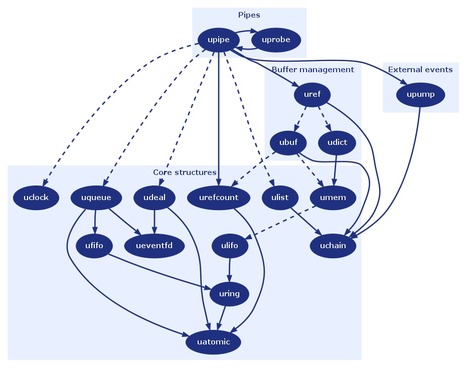
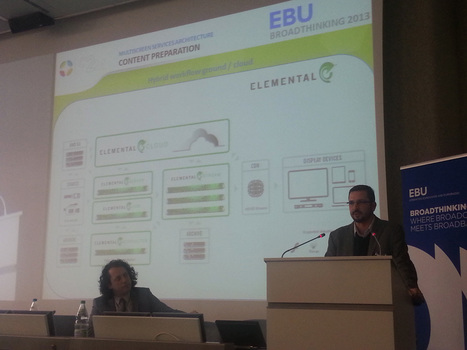
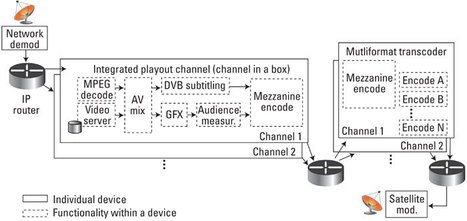

![Xstream Launches new Ingest Service [PR] | Video Breakthroughs | Scoop.it](https://img.scoop.it/s7hief4cxI20p7nahpyg5Tl72eJkfbmt4t8yenImKBVvK0kTmF0xjctABnaLJIm9)

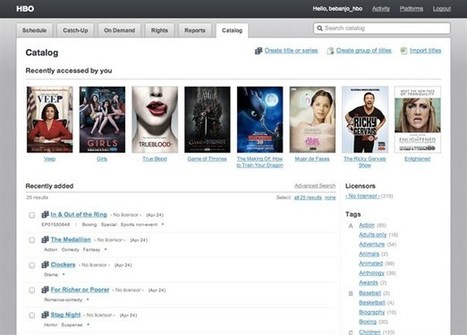






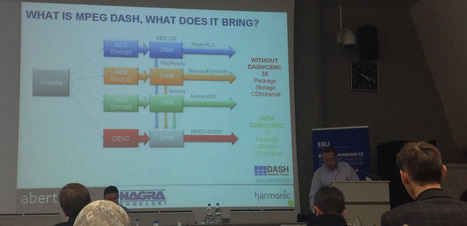


![OTT Video Services : Trends and Technologies [slide deck] | Video Breakthroughs | Scoop.it](https://img.scoop.it/mEBFuHl9IGk6rcbKiWfvpDl72eJkfbmt4t8yenImKBVvK0kTmF0xjctABnaLJIm9)





